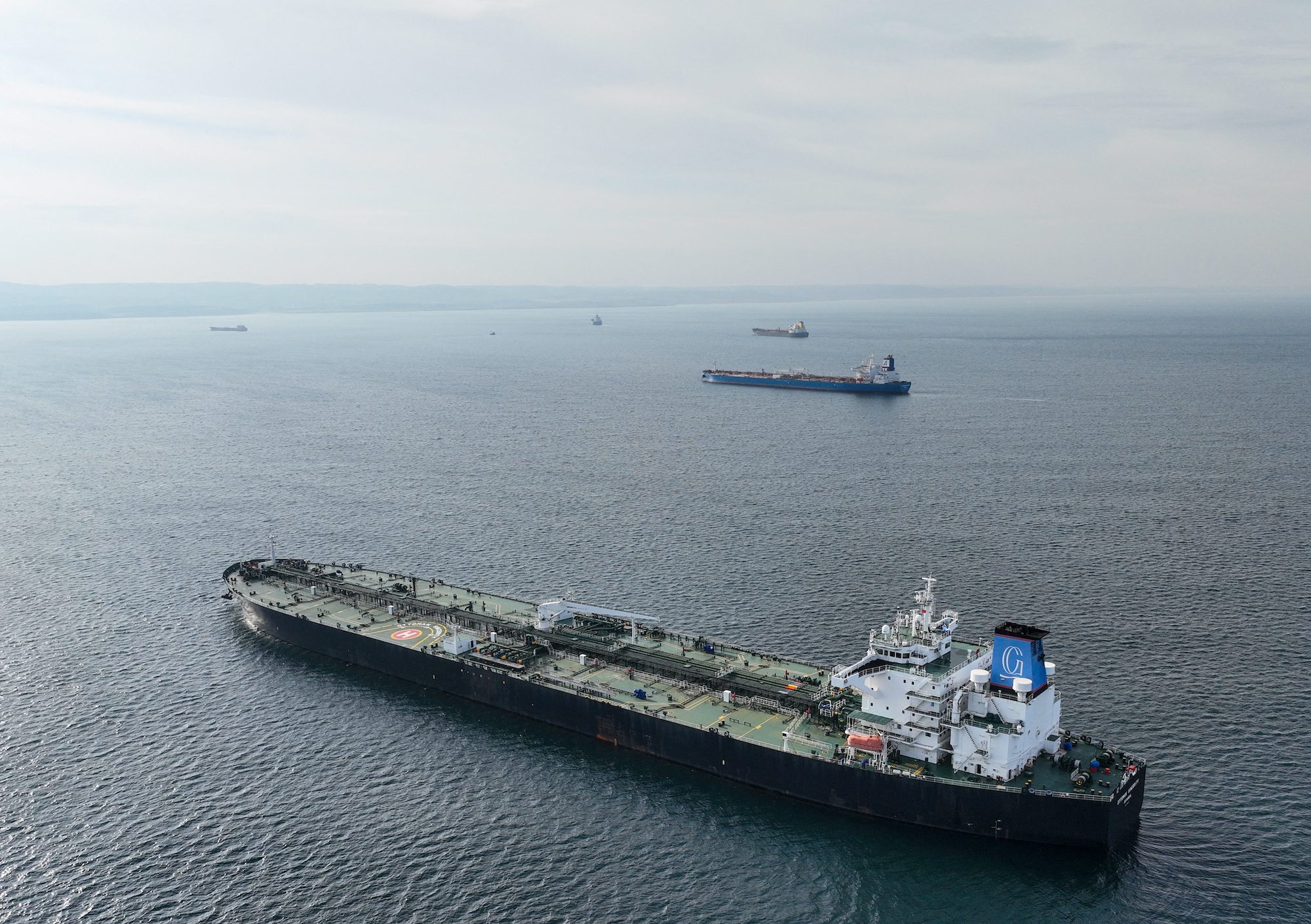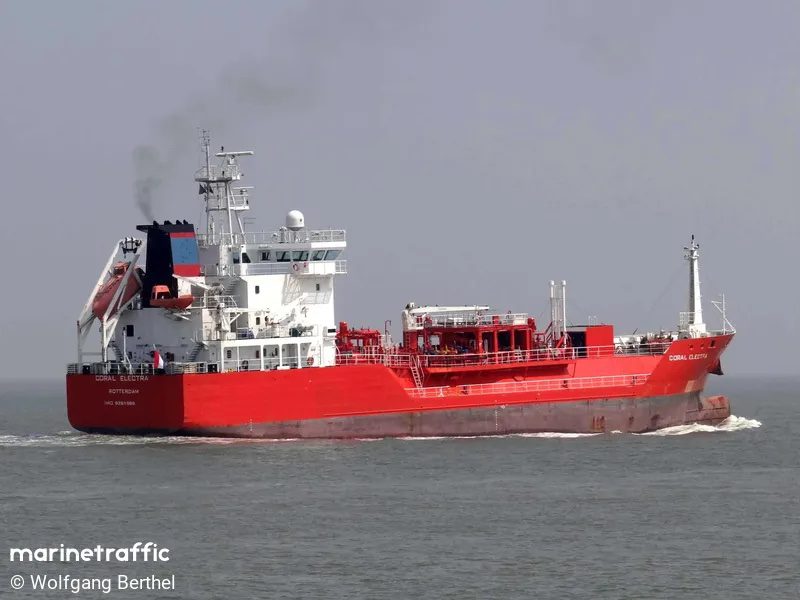Olympus under tow, Image (c) Crowley Maritime Corp.
 By Kristen Hays and Terry Wade
By Kristen Hays and Terry Wade
CORPUS CHRISTI, Texas, Oct 28 (Reuters) – The Gulf of Mexico, stung by the worst offshore oil spill in U.S. history in 2010 and then overshadowed by the onshore fracking boom, is on the verge of its biggest supply surge ever, adding to the American oil renaissance.
Over the next three years, the Gulf is poised to deliver a slug of more than 700,000 barrels per day of new crude, reversing a decline in production and potentially rivaling shale hot spots like Texas’s Eagle Ford formation in terms of growth.
The revival began this summer, when Royal Dutch Shell’s 100,000 barrels per day Olympus platform was towed out to sea 130 miles (210 km) south of New Orleans – the first of seven new ultra-modern systems starting up through 2016. It weighs 120,000 tons, more than 200 Boeing 777 jumbo jets.
SEE: Crowley’s Ocean Class Workhorses Team Up to Deliver Olympus Mega-Platform [PHOTOS]
The Gulf Of Mexico’s growth will bolster the United States’ emerging role as the world’s top oil and gas producer, a trend led by advances in hydraulic fracturing and horizontal drilling that unlock hydrocarbons from tight rock reservoirs in places like North Dakota’s Bakken and the Permian of West Texas.
Rising domestic production and the start of natural gas exports may transform the economy and realign geopolitics as U.S. reliance on foreign oil declines.
The resurgence in the Gulf is occurring even though the U.S. government imposed stringent safety and environmental rules after BP Plc’s Macondo spill. Foreign countries from Brazil to Angola have also aggressively courted Big Oil to invest in developing their offshore fields. And the shale boom has diverted billions of dollars in capital onshore.
The deepwater Gulf, considered the most technically challenging offshore oil patch, remains alluring even as other areas struggle. Brazil attracted only a single bid this month for its once-touted Libra field, yet global companies still compete fiercely for the right to drill in the Gulf.
“A barrel of discovered oil in the Gulf of Mexico is difficult to beat for value anywhere else, even with the increased costs of doing business,” said Jez Averty, senior vice president of North American exploration at Norway’s Statoil .
Huge finds over the last decade – in what engineers call “elephant fields” that can produce for 25 years or more – are lifting growth in a basin some companies once abandoned, fearing it was drying up or its resources were beyond reach.
“This is still one of the premier oil and gas regions in the world and that’s why we’ve never left,” said Steve Thurston, vice president of Chevron Corp’s North American exploration and production division.
Even after decades of production in the Gulf, government estimates have shown that 48 billion barrels could still be recovered.
LOWER TERTIARY
The area of the Gulf of Mexico where most of the new infrastructure will start up is in an ancient geological trend in its deepest waters 200 miles or more from shore known as the Lower Tertiary, estimated to hold 15 billion barrels of crude.
Appraisals in the Gulf’s Lower Tertiary have shown fields that could have half a billion barrels or more of oil, like Exxon Mobil Corp’s Hadrian, estimated to hold up to 700 million barrels, or Anadarko Petroleum Corp’s Shenandoah, which tests this year showed could hold up to three times more than initial estimates of 300 million barrels.
The potential bounty of massive deposits that can produce for a quarter century or more is what keeps players coming even though a single well that bores tens of thousands of feet through thick salt and rock to strike oil – or a dry hole – can cost $130 million or more.
By contrast, an onshore well costs about $8 million to drill – but may only produce a trickle of oil for a few years.
Chevron’s Jack/St. Malo project, which will tie a platform to the ocean floor 7,000 feet below the surface and tap a reservoir 26,000 feet deep, costs $7.5 billion.
It may become the biggest such platform in the world after shipping out later this year, with the ability to double its initial 170,000 bpd capacity. It will be followed next year by Chevron’s second new platform, Big Foot, to be secured to the sea floor by 16 miles of interlocking metal strands, or tendons.
In addition to projects by Anadarko Petroleum Corp and Williams Cos, private equity firm Blackstone Energy Partners will join the game. In 2015, Blackstone’s partner LLOG Exploration aims to start up Delta House – named for the boisterous fraternity in the film “Animal House” – less than 10 miles (16 km) from BP’s plugged Macondo well.
Delta House will pump oil from the Marmalard and Bluto fields, namesakes of characters in the movie.
CLEAR AND STABLE RULES
Three years ago, some analysts thought the post-Macondo Gulf would have fewer players as stricter regulations and higher operating chilled activity, particularly for smaller companies.
Producers must now provide more detailed plans for offshore operations, submit to more frequent inspections and prove they have access to a rapid-response system to cap a gushing well. More than 4 million barrels of oil poured into the sea for 87 days after the Macondo well blowout killed 11 men.
High costs have given some companies pause. Even as BP began appraisal drilling at its self-described “giant” Tiber field this August, a month later it canceled contracts to build a second platform at its Mad Dog field. BP says it wants to move forward on Mad Dog 2 “with the right plan.”
Many others are pressing ahead full steam.
“It hasn’t scared us away,” John Hollowell, Shell’s top deepwater executive for Shell Upstream Americas said, noting deepwater is one-third of Shell’s growth platform, alongside natural gas and unconventional areas like onshore shales.
Hess Corp Chief Executive John Hess has told analysts the company, which operates one oil and gas platform in the Gulf with another on the way next year, also aims to increase its exploration in the deep waters.
“It’s a core area for us and now that Macondo is behind the industry, it is an area where we intend to start investing more, assuming we get the returns that we expect,” he said.
Companies say the Gulf is still the best deepwater basin to set up shop – with high profit margins, reasonable per-barrel costs and a predictable legal and regulatory system.
Operators can bring in their own workers rather than employ a certain number from the host country, as they do in Brazil – where just finding enough qualified workers is a hurdle.
Gulf operators also do not have to brace themselves for sudden changes in royalty requirements or possibly be blocked from bidding on drilling rights, as has happened in Angola.
To get in the Gulf of Mexico’s door, they put in the highest bid when the government leases drilling rights.
“All you have to do is show up at the lease sale,” Statoil’s Averty said. (Editing by Eric Walsh)
(c) 2013 Thomson Reuters, All Rights Reserved

 Join The Club
Join The Club










